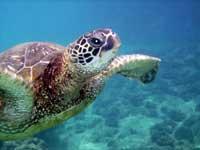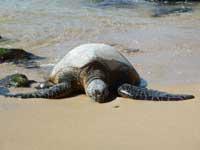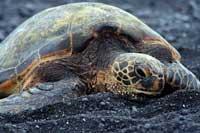Illegal capture of sea turtles

The government of Madagascar has banned the capture of sea turtles. In this island state of Southeast Africa, most turtle species have declined in recent years. The seriousness of the situation caused local authorities to agree years ago on measures to protect these animals.
However, a study now reveals that the law is systematically breached. The complaint was made by researchers from the Exeter University of the United Kingdom and the environmental organization Blue Ventures, who have made a first direct assessment of the exploitation of turtles in the African island state.

“According to the laws of Madagascar it is illegal to capture turtles, but we know that small-scale they are dedicated to artisanal fishing. We have found that 16,000 endangered sea turtles are captured annually in a single region of the southwest of the island,” said one of the study’s managers.
The results have been published in the journal Animal Conservation. This small-scale capture is given great importance in the published article. This activity is difficult to control, as access to many remote areas is complicated. But its influence could be “vital” to find a sustainable way to manage the capture of sea turtles in the area. “Being endangered species, knowing what happens in that region is very important to us. We want to find a sustainable way forward by working with local communities.”
Green turtle, the most affected
To be able to directly analyze sea turtle catches, the researchers went to the neighbors of the twelve major cities of Madagascar to ask for help. It was accepted for an amount of money (about $3,000 a year to each member of all American communities). Previously they were trained to obtain biological data, document the catches of each turtle and, whenever possible, take a photo.

A total of 699 turtle landings have been documented, including four different species of turtles. In 93.6% of cases, the victim has been the green turtle ( Chelonia mydas). By combining the new data with those they already had in the same region, scientists have concluded that the number of turtles they capture annually in that specific area of Magascar is 10,000 to 16,000, “always prudently”. “It is clear that we cannot be sure that we receive information about any capture. That’s why, although we have to consider data as a prudent estimate, it’s really useful.”
Turtles are a good source of meat for the inhabitants of Madagascar. In addition to domestic consumption, they are also used for illegal trade. “But they should also understand the importance of ensuring the survival of animals,” the researchers explain.
The results obtained are worrying, “and it is possible that in many countries of the tropical coast similar results are recorded, they warn. Until we have more data, it will be difficult to find a solution to the problem. It is clear that the ban on capture has not worked, and to achieve a sustainable situation we will have to collaborate with communities. Our research model can be used elsewhere, as it has paved the way for concrete data.”
Published in 7K.
Buletina
Bidali zure helbide elektronikoa eta jaso asteroko buletina zure sarrera-ontzian











